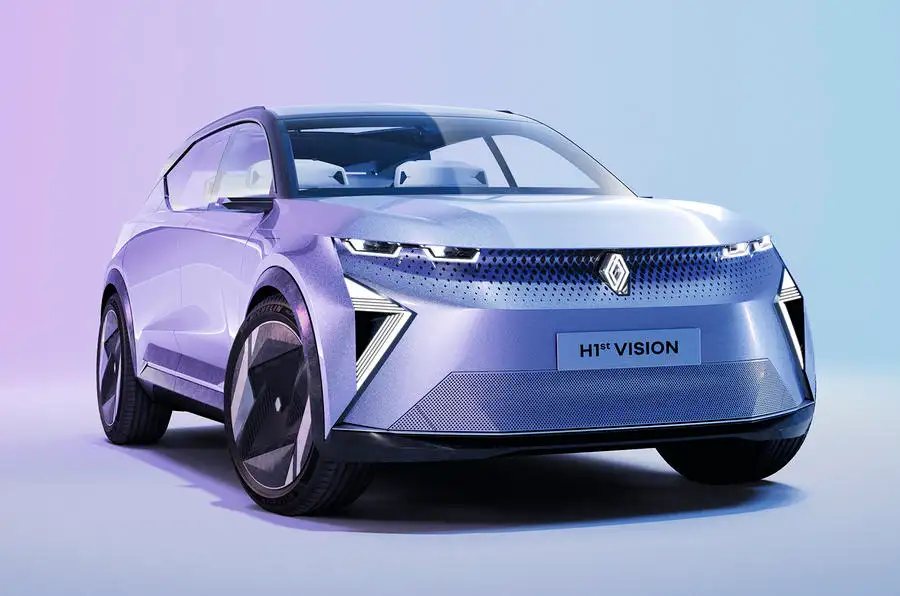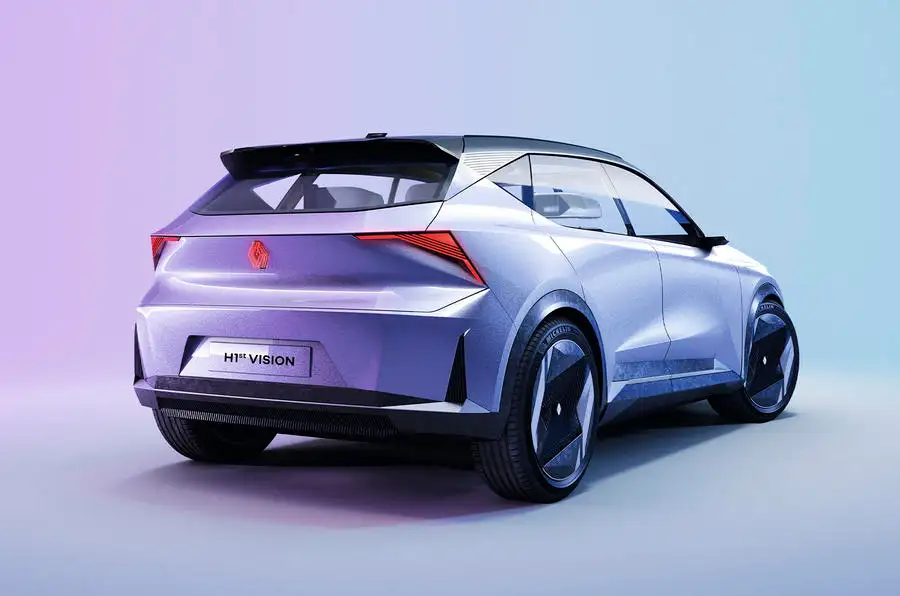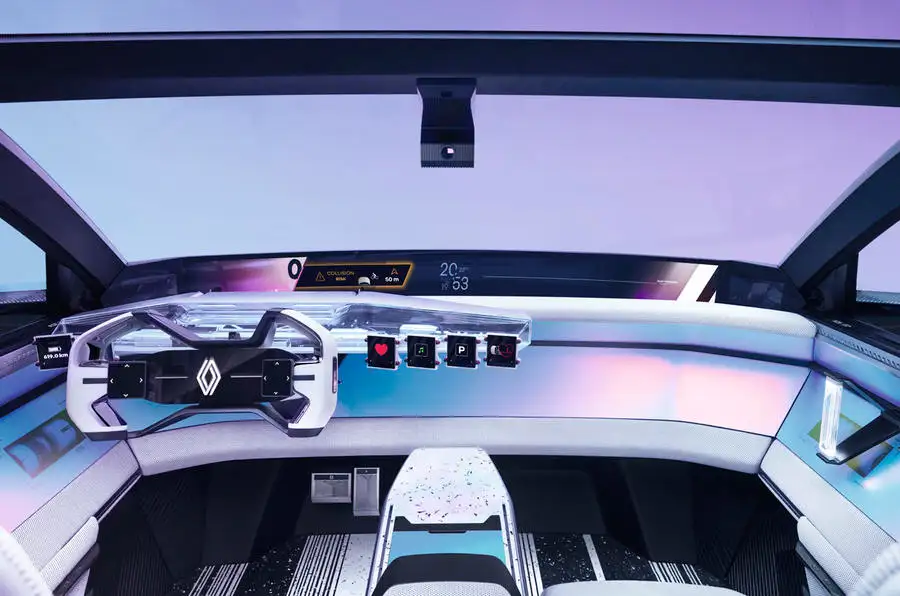High-tech concept car features a futuristic look at upcoming electric cars.
A consortium comprising some of France’s most recognisable industrial giants has revealed a concept car promising to launch a “revolution in mobility” with 20 “concrete, operational” new technologies.
Established in 2021, Software République was founded by computing firms Atos and Dassault Systèmes, equipment supplier Thales, semiconductor maker ST Microelectronics, telecommunications giant Orange and the Renault Group.
Its aim is to create a European framework for the future of mobility, offering services from more than 50 start-ups in more than 50 markets in just two years’ time.
Its first concept car, the H1st Vision, is an apparent evolution of last year’s Renault Scenic Vision, adapted to demonstrate “human-centred” innovations in the mobility sphere. These aim to improve the convenience, safety and ownership experience of new cars.
Convenience
Chief among the H1st Vision’s innovations is biometric unlocking, which does away with a traditional key fob and uses your face, name, height and gait to register you as a user of your car.
Cameras in the door mirrors recognise your walk as you approach the vehicle from up to six metres away, while a unit in the B-pillar detects your face. If it detects one of the registered users of the car, it projects a greeting onto the rear window and asks if you would like to be let in. You saying ‘yes’ then unlocks the car and automatically adjusts the seating to your preferences.
The system, which stores all your information in a secure “digital ID wallet”, will help to simplify car rental, sharing, and driving licence checks, claims Software Rèpublique.
Inside the H1st, a 16-speaker sound system allows each occupant to make a private phone call, playing the audio through speakers mounted in their headrest while cancelling its frequencies in the vicinity of all other passengers.
This same system is also used for the on-board safety systems. The collision warning system, for example, plays a sound through the speaker where the hazard is located and can play a sound to warn of an approaching emergency vehicle so you know to clear a path.
The H1st can also park remotely according to one of three programmes: Closest, which leaves the car as close to your destination as possible; Fastes’, which also considers public transport and cycling options so you reach your destination sooner; and Economical, which gets you to your destination as cheaply as possible.
Once the car is parked, an automated chatbot can arrange and pay for services such as parking and charging. Once the car pays for the service, it automatically displays a receipt (such as a parking ticket) on the dashboard.
The H1st is equipped with vehicle-to-grid charging so it can be used to power external devices – even your house, in case of blackouts. It features an automatic energy management system that communicates with the grid to manage electricity consumption, charging the car’s battery when consumption is low and tariffs are cheaper and using it to power your home when rates are high.
Renault’s shared-mobility subsidiary, Mobilize, has developed a specialised home chargepoint to take advantage of this functionality, capable of delivering 7-22kWh on an AC supply.
Safety
Driver-attention monitoring will soon become standard on all cars sold in the European Union under the new General Safety Regulations 2 (GSR2) regulations, but the H1st goes a step further. It can monitor a driver’s heartbeat and breathing and then suggest changes in the interior conditions (the lighting and climate) or breathing exercises.
The car also records the driver using a camera and dashboard mounted under the rear-view mirror, analysing your facial expressions and suggesting breathing exercises if you become frustrated.
If you’re unfit to drive or experience a medical emergency while behind the wheel, the car will send the aforementioned health data to an assistance service (with your permission) and set up a video call with a doctor.
It can also make calls via satellite in conventional blackspots.
The H1st can access accidental data to alert the driver that they’re in a hotspot, also judging this against the weather and live traffic data tracking vulnerable road users such as cyclists.
Communication with other vehicles also tells the driver when an emergency vehicle is approaching, giving them ample time to clear a path.
Ownership experience
The H1st features an array of ‘virtual sensors’ fitted to a digital twin of the car, accurately assessing the wear on key components such as the battery, brakes, tyres, gearbox and chassis. This also means the car can provide a specially tailored service scheduled based on its usage and offer advice to stretch its lifespan.
The same technology means the car can generate an independent, tamper-proof health certificate, giving a full picture of the car’s condition, as well as its ownership and service histories. This boosts resale values, claims Software Rèpublique.






